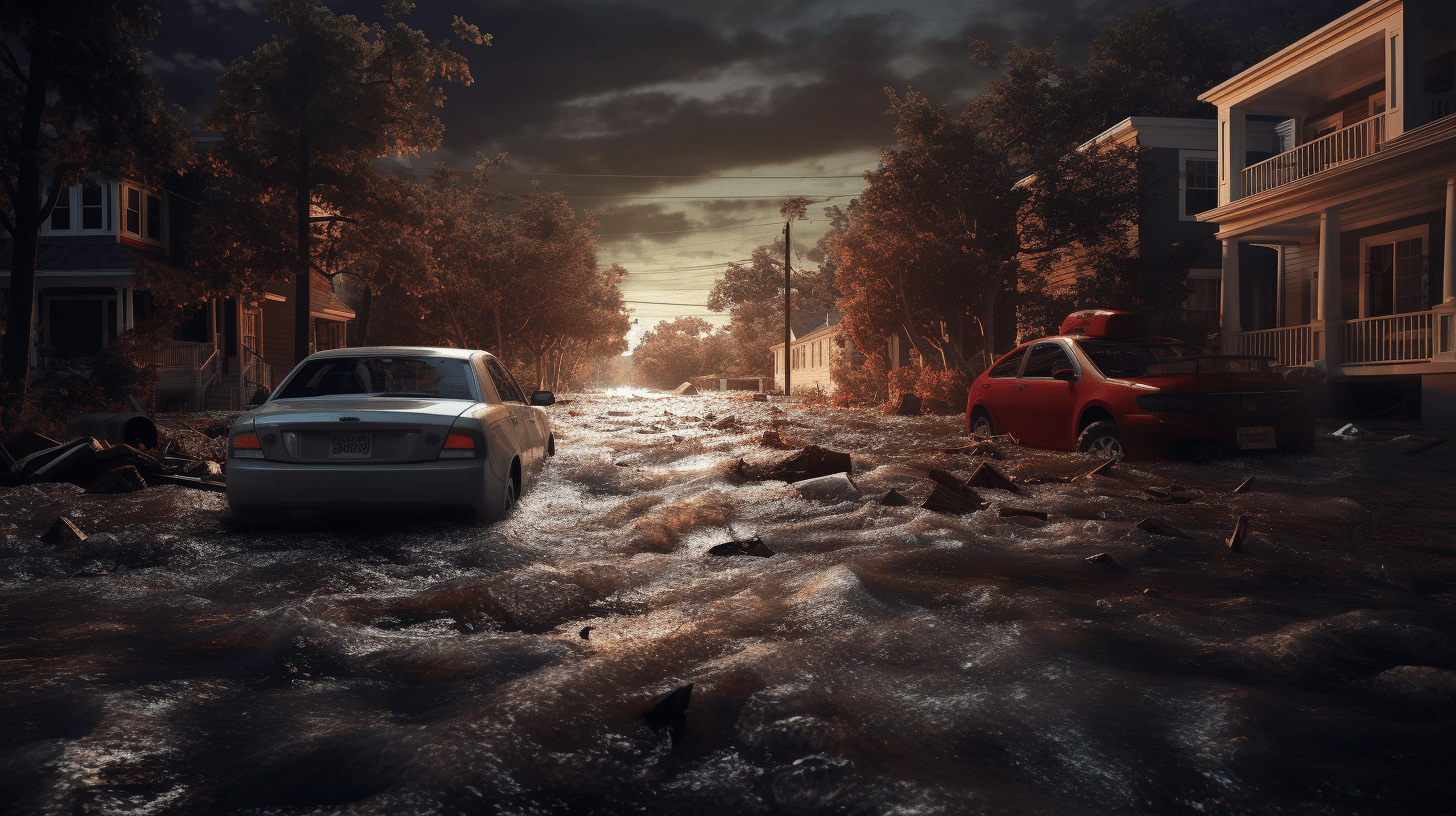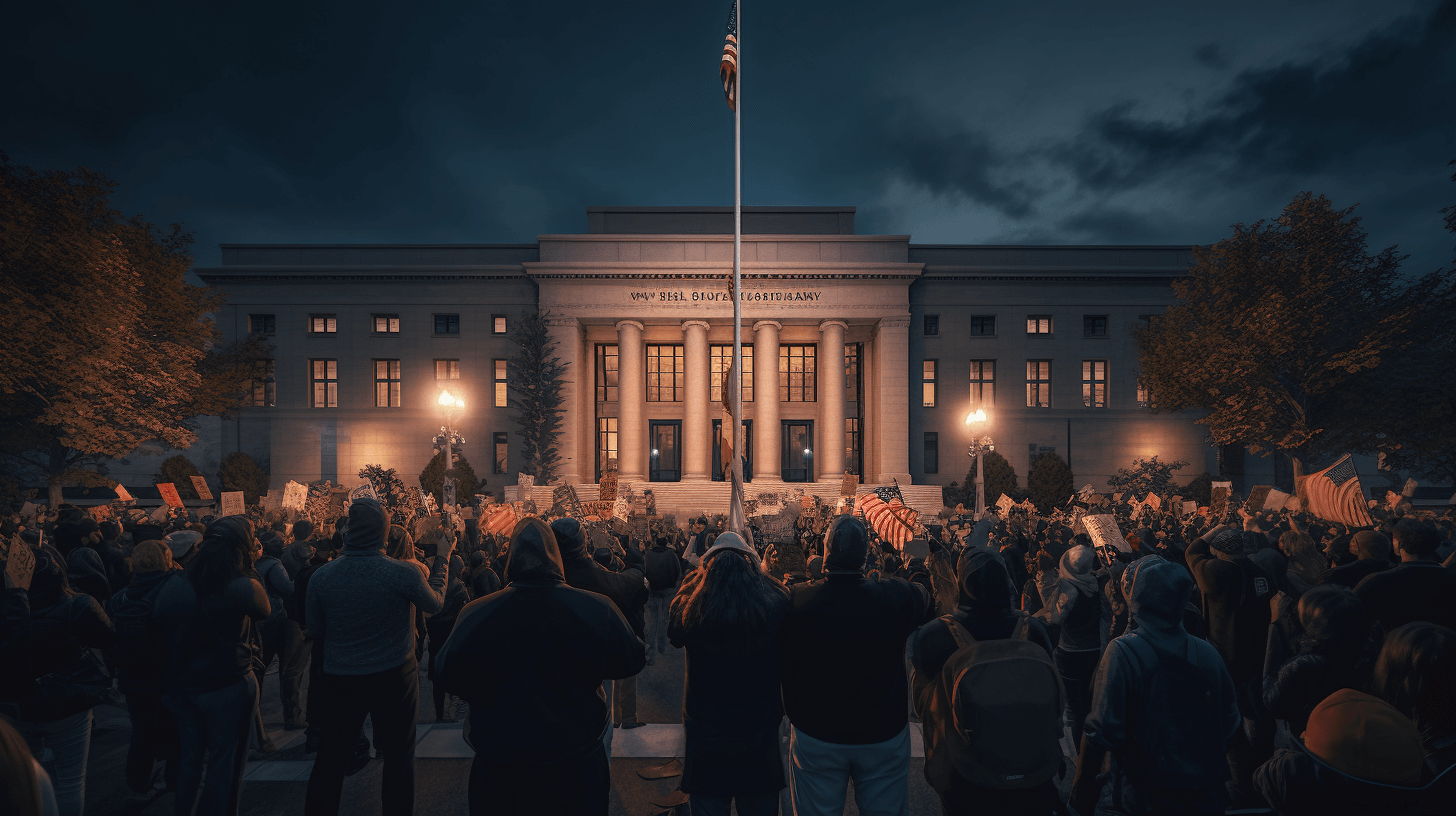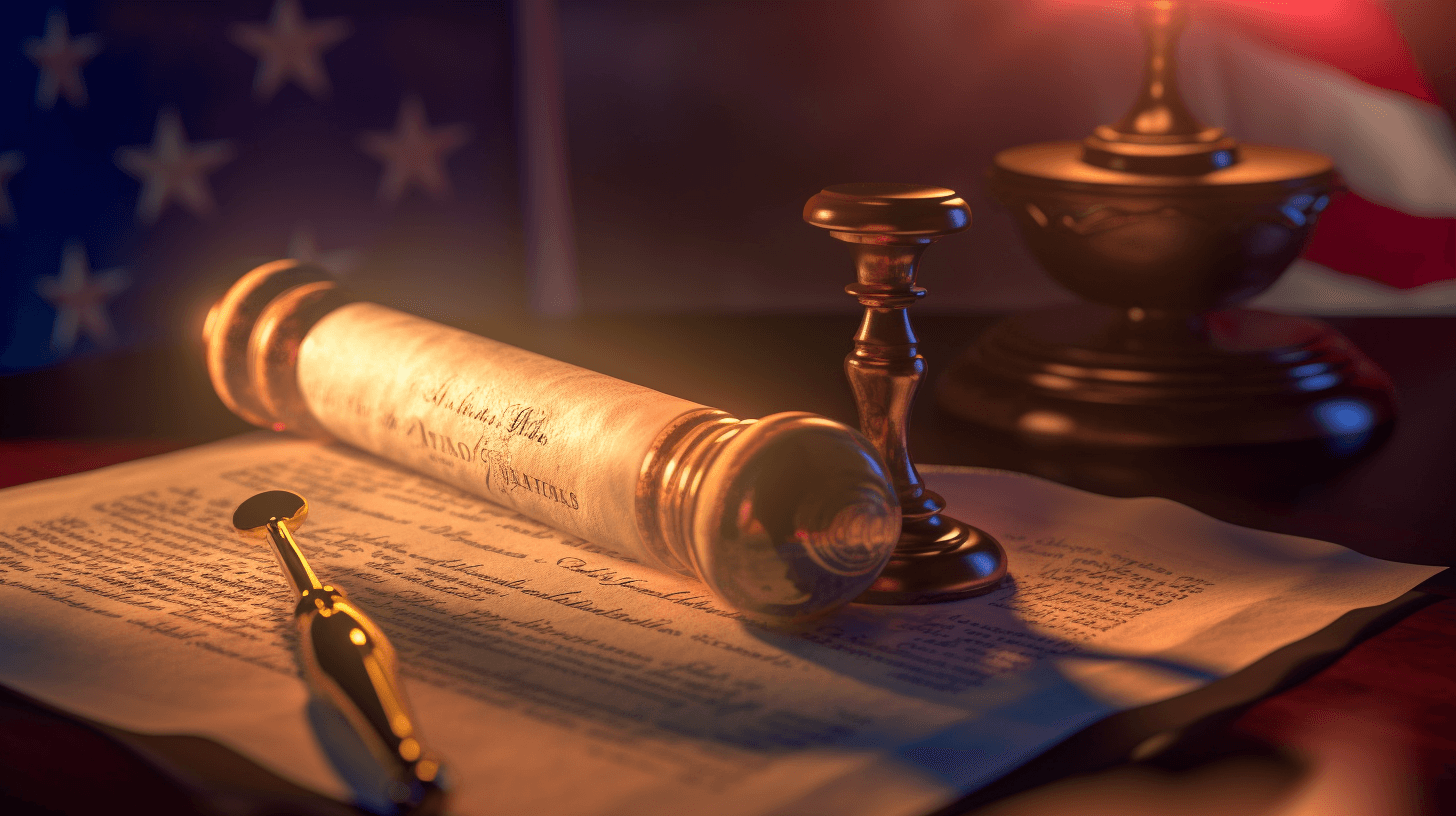☔💔 Da Devastating Floods in Vermont: Stay Alert foa More Rain
⬇️ Pidgin | ⬇️ ⬇️ English
Afta one powerful storm dump up to nine inches of rain on parts of Vermont, residents in cities and towns all ova da state stay only beginning to grapple wit da destruction caused by da flooding unleashed by da deluge.
Though skies stay cleared since Monday’s storm, and rivers have crested, officials stay warning residents foa stay on alert as more rain stay expected in da coming days.
Here’s what to know about da flooding:
Thousands of residents stay lost their homes or businesses to da storm. Da storm first strike New York State on Sunday, wit one death attributed to fast-moving floodwaters there. Within only four hours, more than seven inches of rain fall at West Point. Several train lines in da state, like Metro-North’s Hudson and Harlem lines, stay suspended on Monday as a result of fallen trees, mud, and boulders blocking da tracks.
Da system den head north into New England, causing severe flooding and forcing hundreds of people to evacuate their homes in Vermont. At least two of Vermont’s rivers — da Winooski, which run through Vermont’s capital, Montpelier, and da Lamoille — surpass levels dat dey had reached during Tropical Storm Irene in 2011.
Da flooding shut down major roads and state highways, and city officials in Montpelier issue an emergency order on Tuesday temporarily closing da flooded downtown area.
Gov. Phil Scott of Vermont describe da flooding as “historic and catastrophic” and say on Tuesday that thousands of residents had lost their homes, businesses, and more.
As of Wednesday morning, Vermont officials say dat no injuries or deaths had been reported, but dey caution dat rescues stay still ongoing.
“I tink we all understand dat we now living through da worst natural disaster to impact da state of Vermont since 1927, when dozens of people died,” Senator Bernie Sanders of Vermont say on Wednesday, referring to da catastrophic floods dat hit da state dat year. More than 200 rescues had been carried out, officials say on Wednesday, as teams use boats and helicopters foa pull people from flooded homes and cars.
Jennifer Morrison of da Vermont Department of Public Safety say on Wednesday dat da state already in “much better shape” dan it was one day before.
Dey had concerns about dams and odda infrastructure. One of da biggest worries dis week stay whether da Wrightsville Dam, just north of downtown Montpelier, would exceed its capacity.
William Fraser, da Montpelier city manager, had say on Tuesday dat da dam was nearly full and could potentially spill into da North Branch River.
“Dis neva happen since da dam was built, so dey no get any precedent for potential damage,” he say.
By Tuesday afternoon, city officials say dat da water was only a foot below da dam’s auxiliary spillway, but dat da rate at which da water was rising had slowed.
Da water began to drop through da night, though Mr. Scott say on Wednesday that officials would keep a close eye on da dam over da next several days. Da flooding and storm debris also forced da closure of dozens of roads across da state, including Interstate 89, which was shut down on Monday night, stranding many motorists overnight.
Da full extent of da damage not yet known. Officials say Wednesday dat dey had begun compiling reports of damage and destroyed infrastructure.
But wit some areas in Vermont still hard to reach and da damage spread ova a large area, officials say dey would need time before dey could give a full account of da toll on homes, businesses, roads, bridges, and odda infrastructure.
Chief Eric W. Nordenson of da Montpelier Police Department say Tuesday dat da city’s resources had initially been “spread very thin” by da calls foa help.
In odda towns, like Londonderry, which was heavily affected by da flooding on Monday, da cleanup was already underway as of Tuesday afternoon.
In New York, officials on Monday estimate dat da damage would likely run into da tens of millions of dollars to repair.
“My friends, dis da new normal,” Gov. Kathy Hochul of New York say on Monday, referring to climate change’s effect on flooding. People must “be prepared for da worst,” she say, “because da worst continues to happen.” There is more rain in da forecast. According to da National Weather Service, Wednesday is forecast to be generally sunny across Vermont. However, showers and thunderstorms are possible on Thursday, along wit a slight risk of excessive rain — described as “a few additional inches” — across much of Vermont, New Hampshire, and eastern New York.
Mr. Scott warn on Wednesday dat, even though da sun shining and da water in some areas receding, the episode not yet over.
“With rain in da forecast, and nowhere foa it to go, we could see waters rise again,” he say.
NOW IN ENGLISH
☔💔 Vermont’s Devastating Floods: 🌧️ Stay Alert for More Rain
After a powerful storm dumped up to nine inches of rain in parts of Vermont, residents in cities and towns across the state are just beginning to grapple with the destruction caused by the flooding unleashed by the deluge.
Though skies have cleared since Monday’s storm and rivers have crested, officials are warning residents to remain on alert as more rain is expected in the coming days.
Here’s what to know about the flooding:
Thousands of residents have lost their homes or businesses to the storm. The storm first struck New York State on Sunday, with one death attributed to fast-moving floodwaters there. Within only four hours, more than seven inches of rain fell at West Point. Several train lines in the state, like Metro-North’s Hudson and Harlem lines, were suspended on Monday as fallen trees, mud, and boulders blocked the tracks.
The system then headed north into New England, causing severe flooding and forcing hundreds of people to evacuate their homes in Vermont. At least two of Vermont’s rivers—the Winooski, which runs through Vermont’s capital, Montpelier, and the Lamoille—surpassed the levels they had reached during Tropical Storm Irene in 2011.
The flooding shut down major roads and state highways, and city officials in Montpelier issued an emergency order on Tuesday temporarily closing the flooded downtown area.
Gov. Phil Scott of Vermont described the flooding as “historic and catastrophic” and said on Tuesday that thousands of residents had lost their homes, businesses, and more.
As of Wednesday morning, Vermont officials said that no injuries or deaths had been reported, but they cautioned that rescues were still ongoing.
“I think we all understand that we are now living through the worst natural disaster to impact the state of Vermont since 1927, when dozens of people died,” Senator Bernie Sanders of Vermont said on Wednesday, referring to the catastrophic floods that hit the state that year.
More than 200 rescues had been carried out, officials said on Wednesday, as teams used boats and helicopters to pull people from flooded homes and cars.
Jennifer Morrison of the Vermont Department of Public Safety said on Wednesday that the state was already in “much better shape” than it was a day before.
There had been concerns about dams and other infrastructure. One of the biggest worries this week was whether the Wrightsville Dam, just north of downtown Montpelier, would exceed its capacity.
William Fraser, the Montpelier city manager, had said on Tuesday that the dam was nearly full and could potentially spill into the North Branch River.
“This has never happened since the dam was built, so there is no precedent for potential damage,” he said.
By Tuesday afternoon, city officials said that the water was only a foot below the dam’s auxiliary spillway, but that the rate at which the water was rising had slowed.
The water began to drop through the night, though Mr. Scott said on Wednesday that officials would keep a close eye on the dam over the next several days.
The flooding and storm debris also forced the closure of dozens of roads across the state, including Interstate 89, which was shut down on Monday night, stranding many motorists overnight.
The full extent of the damage is not yet known. Officials said Wednesday that they had begun compiling reports of damage and destroyed infrastructure.
But with some areas in Vermont still hard to reach and the damage spread over a large area, officials said they would need time before they could give a full account of the toll on homes, businesses, roads, bridges, and other infrastructure.
Chief Eric W. Nordenson of the Montpelier Police Department said Tuesday that the city’s resources had initially been “spread very thin” by the calls for help.
In other towns, like Londonderry, which was heavily affected by the flooding on Monday, the cleanup was already underway as of Tuesday afternoon.
In New York, officials on Monday estimated that the damage would likely run into the tens of millions of dollars to repair.
“My friends, this is the new normal,” Gov. Kathy Hochul of New York said on Monday, referring to climate change’s effect on flooding. People must “be prepared for the worst,” she said, “because the worst continues to happen.”
There is more rain in the forecast. According to the National Weather Service, Wednesday is forecast to be generally sunny across Vermont. However, showers and thunderstorms are possible on Thursday, along with a slight risk of excessive rain—described as “a few additional inches”—across much of Vermont, New Hampshire, and eastern New York.
Mr. Scott warned on Wednesday that, even though the sun is shining and the water in some areas is receding, the episode is not over.
“With rain in the forecast, and nowhere for it to go, we could see waters rise again,” he said.







